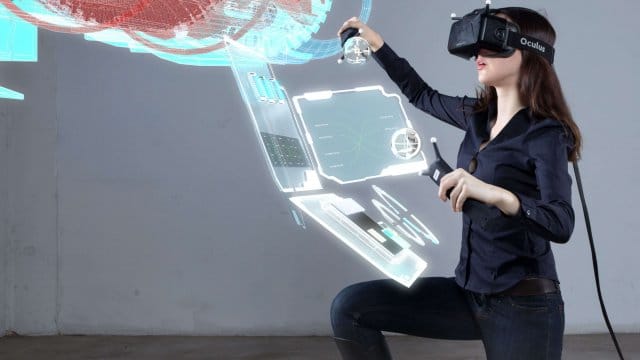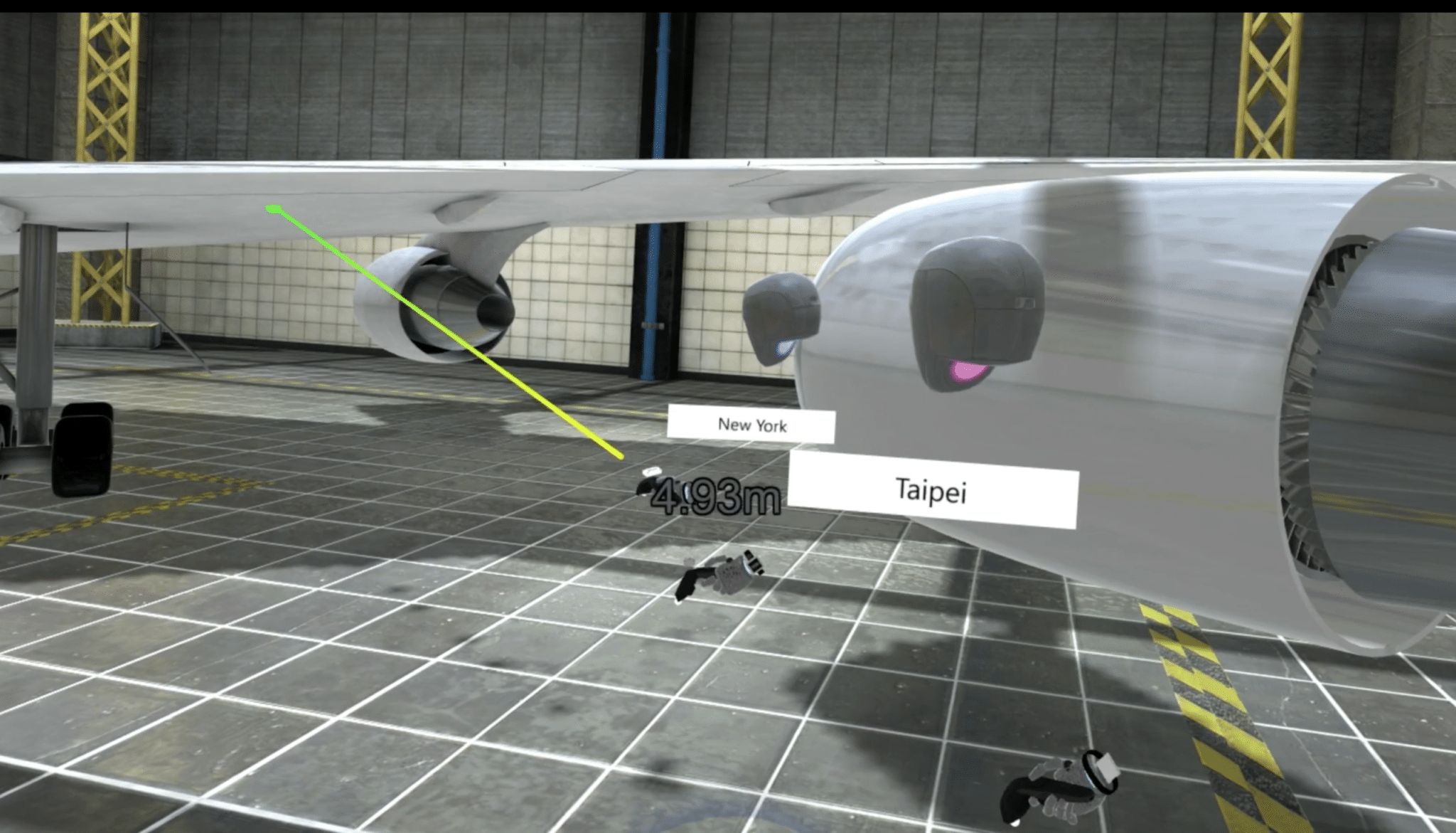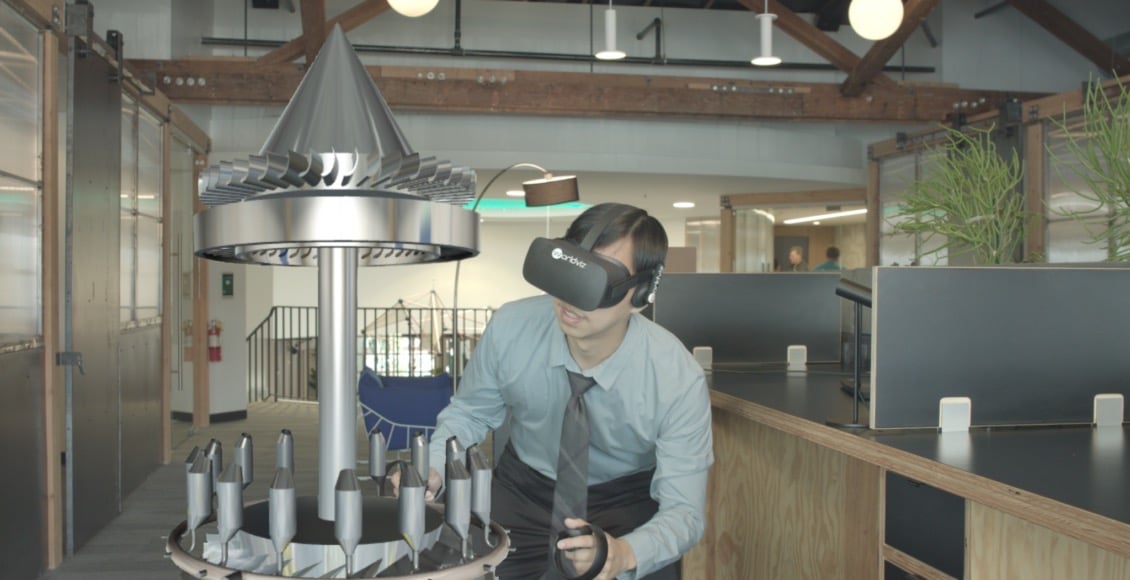
One of VR’s killer apps will be be social interaction — just ask Facebook. And the enterprise version of that principle is collaboration (think: design, maintenance, sales). This is where Santa Barbara-based WorldViz hangs its hat.
The company’s current focus is Vizible, a collaborative VR software product launching next month for interacting with far-flung colleagues, clients or sales targets. Reps for large products (think: automotive or aerospace) can remotely demonstrate items with spatial accuracy and interactivity.
WorldViz’ positioning today is empowered by two macro trends, according to co-founder Andy Beall Ph.D.. One is enterprise demand for social and collaborative VR. The other is the democratization of hardware, available in highly-capable systems right off the shelf.
“Our corporate clientele have spoken to the need for collaboration.” Beall told ARtillry. “And for a few hundred bucks, you have what used to cost $40K for an equivalent-quality headset. Those two pieces have resulted in our last almost two year effort to devise and build Vizible.”
The technology itself is rooted in Beall’s background in psychology. VR was in fact a little-known early booster of lots of academic research in human perception and behavior. But around 2002, the company was formed when it saw collaborative VR opportunities in several other verticals.
“The fact that we could offer to a company like Boeing the software that works with hardware they already have and gives them ability to walk around a one-to-one scale aircraft model, that was a real door opener.” Beall said. “That led us to where we are today.”
Power Point + GoToMeeting

Vizible importantly includes an authoring tool to build visual components within collaborative environments with all the ease of a Unity or other game engine. This lets enterprises not only give VR presentations but build them, including visual assets or 3D models they already have.
This one-two punch represents a strategy to become the Power Point and Go-To-Meeting of VR, as Beall puts it. It’s a vision that drives WorldViz overall product philosophy to lower barriers for enterprise VR adoption, including non-technical people throughout a given organization.
“The stumbling block is trying to get VR out of the IT fortress, and beyond the few people within an organization that are the game developers or engine developers,” said Beall, “and to get it into the hands of anyone who is essentially a Microsoft Office user.”
Beall’s strategy also aligns with the overall trend towards democratization of technology throughout the enterprise. Gartner famously asserted that the CMO’s tech budget is approaching the CIO’s budget, empowering non-technical departments to adopt and implement new tech.
“We want to stir the pot that VR could go after that side of a company’s business,” said Beall. “It’s not just restricted to product design or training. This could be at your front line where you build your revenue. You can utilize collaborative VR technology at that stage.”
Inherently Spatial

As for the enterprise verticals that hold the most opportunity for WorldViz, they’re simply the ones that require the most visual nuance to a given product’s collaboration, maintenance or sales. That includes most notably manufacturing, large product design, aircraft and automotive.
Some verticals present adoption challenges, such as the automotive industry’s cultural history/affinity for clay-based design processes. And Beall is honest that Visibile isn’t a silver bullet for all forms of collaboration and interaction. There are use cases that might not apply.
“VR in a social setting isn’t going to be what lawyers need to do a deposition,” he said. “That’s really well handled by Cisco high-end telepresence systems and its all verbal and intellectual information. Vizible works best where the material and the conversation are inherently spatial.”
But one area where Vizible very much applies is sales — a key growth area for WorldViz. Not only is it a function that’s enhanced by graphical demonstration and interaction, but it’s the best department to sell into, due to its political capital and budget — a founding principle of Salesforce.
“It’s like Salesforce plus Service Cloud,” said Beall. “You can start with sales-focused software then you have this whole platform behind it which can tie in to specific corporate processes. That’s something that we’ll be able to offer down the road.”
Open for business

As for WordViz’s current positioning and business objectives, it’s primarily focused on the planned October launch for Vizible. It’s also actively raising for a series B capital funding round. And all the while it’s intent on seeding its market opportunity through a larger hardware installed base.
The latter is somewhat of a network effect for Vizible’s growth, given the need for VR headsets on both ends of the conversation. But it’s already boosted this with an enterprise focus (where early stage adoption is higher) and through a high degree of cross-platform functionality.
“We have methods in place for trying to get through that fact that these headsets aren’t on everyone’s desk,” said Beall. “We pride ourselves in being hardware agnostic. And there are many orders of magnitude more headsets in the enterprise than there were five years ago.”
In the spirit of lowered barriers and cross-platform functionality, Beall is also keen on developing compatibility with Tier-2 headsets including Gear VR and Daydream. This relates to the fact that headset capability continues to improve to levels of functionality for collaboration.
“I think especially in enterprise, the technology is hitting more than acceptable parameters,” he said. “We’re basically at a point that’s [analagous to] the iPhone’s first few generations — a quantum leap from prior attempts like Sidekick. Next is the jump to retinal display.”
For a deeper dive on AR & VR insights, see ARtillry’s new intelligence subscription, and sign up for the free ARtillry Weekly newsletter.
Disclosure: ARtillry has no financial stake in the companies mentioned in this post, nor received payment for its production. Disclosure and ethics policy can be seen here.
